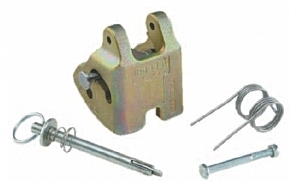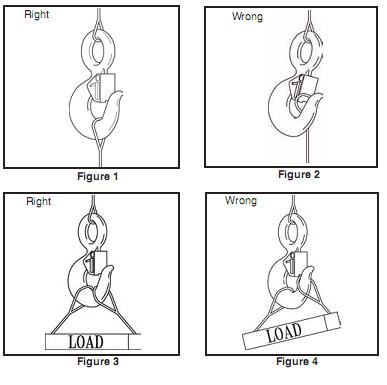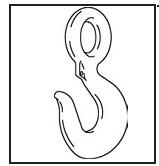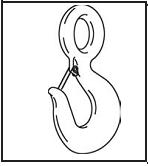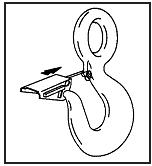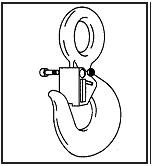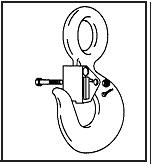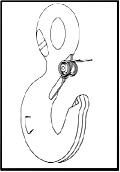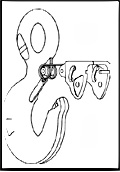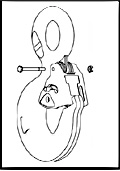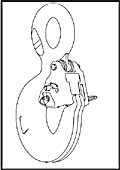Step 1
1. Place hook at approximately a 45 degree angle with the cam up.
Step 2
2. Position coils of spring over cam with legs of spring pointing toward point of hook and loop of spring
positioned down and lying against the hook.
Step 3
3. Position latch to side of hook points. Slide latch onto spring legs between lockplate and latch body until
latch is partially over hook cam. Then depress latch and spring until latch clears point of hook.
Steps 4, 5, & 6
Line up holes in latch with hook cam.
Insert bolt through latch, spring, and cam.
Tighten self-locking nut on one end of bolt.
Step 7 — For Personnel Lifting
7. With latch in closed position and rigging resting in bowl of hook, insert bolt through latch and secure
with nut and cotter pin.When bolt, nut and cotter pin are not being used, store them in a designated place upon the personnel platform. |
Step 1
1. Place hook in upright position. Position coils of
spring over cam with legs of spring pointing toward tip of hook, and loop of spring positioned down and lying against the hook.
Step 2
2. Slip the latch over the spring until the two spring legs are positioned into the grooves located on the inside of the latch housing (legs of spring should fit between the gate and the housing).
Step 3, 4, 5 & 6
3. Slide latch housing up
the spring legs until latch
clears hook tip.
4. Resting latch on
interlocking hook tip, line
up holes in latch with hook
cam.
5. Insert bolt through latch
spring & cam.
6. Tighten self-locking nut
on one end of bolt.
Step 7,8 - For Personnel Lifting
7. Rigging should be
resting in bowl of hook,
with latch in closed
position and gate locked.
8. Insert toggle lock pin
through hole and depress
spring until toggle clears
hole on other side of latch.
Step 9 - For Personnel Lifting
9. Rotate toggle 90 degrees to secure pin (ensure toggle is in closed position as shown).
|






